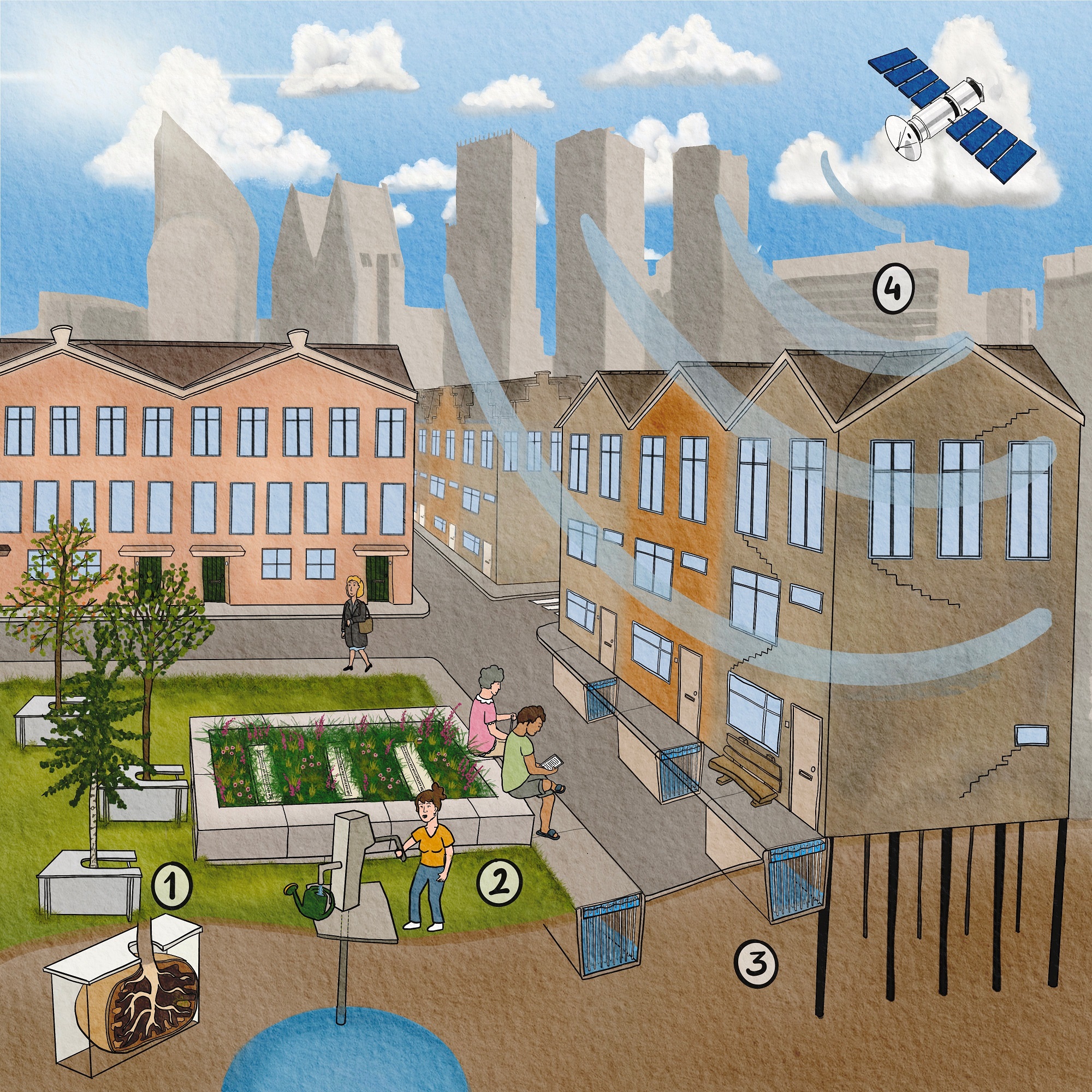Drought in the city
TU Delft researchers and alumni are involved in various initiatives and innovations to deal with the problem of drought in the city. Here are four examples:
1
Two climate arboretums in Delft and Almere have been established to find out how various tree models act to reduce heat stress. Each arboretum has 75 different trees equipped with sensors. “We measure parameters such as evaporation, air and radiation temperature and humidity,” says Professor René van der Velde. The trees in Almere are planted in the ground while those in front of TU Delft’s Faculty of Architecture are in special containers. “The containers are designed for easy assembly. They form a kind of sleeping bag that keeps the roots cool. A Spring Ring system (as used in the London Olympic park) uses an egg-box-like layer that prevents the roots from choking themselves.”
2
Alumnus Mirthe Snoek works for Field Factors on Bluebloqs: green systems especially developed for urban areas that reduce both heat stress and flooding. Rainwater is collected, treated and reused. “The visible part is a biofilter: a compartment containing a special mix of plants and sand in which rainwater is treated. An underground water storage system makes the water available for reuse. The system has been installed in the Netherlands, Belgium and Spain, with each location having a different setup.” For example, the Urban Water Buffer in Spangen, Rotterdam, stores rainwater that is used to water the football club Sparta’s sports fields. The rain garden at ground level reduces heat stress on hot days through the evaporation of rainwater, while local children can play in a special water feature.
3
Movares’ Rainroad is a reservoir for reducing heat stress and floods. The lower reservoir stores excess rainwater during heavy showers, while the water in a smaller reservoir directly under the paving evaporates in hot weather, so not all the sun’s energy is converted into heat. Any overflow of rainwater simply infiltrates into the soil. Alumnus Rinze de Vries: “The process of capillary action, which you also see in trees, ensures the upper reservoir is replenished with water from the lower reservoir. A prototype on the HittePlein (Heat Square) on the TU Delft campus is being used to study the capillary action of quartz sand and wicks in tubes.”
4
Alumnus Mandy Korff, of TU Delft and Deltares, is studying the influence of drought on various types of foundations, such as wooden pile foundations and shallow foundations. She uses satellite images and subsurface and groundwater data to predict which areas are prone to foundation damage due to drought and create maps of these areas. “Parties can then use targeted measures, such as replacing the foundations or stabilising the soil through active groundwater management,” she says. Korff and her colleagues at Deltares have created drought maps for the climate damage atlas and the recently updated climate impact atlas.
